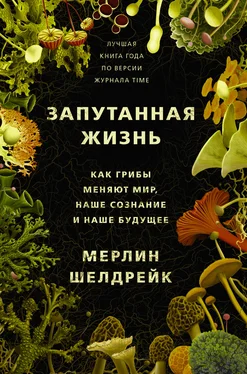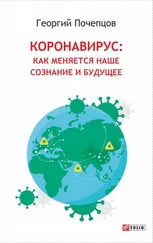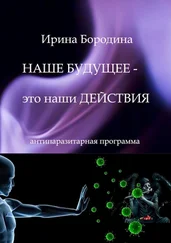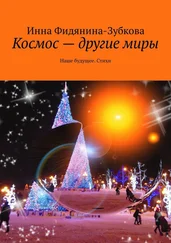Trewavas A. 2016. Intelligence, Cognition, and Language of Green Plants. Frontiers in Psychology 7: 588.
Trewavas A. 2014. Plant Behaviour and Intelligence . Oxford, UK: Oxford University Press.
Trewavas A. 2007. Response to Alpi et al.: Plant neurobiology – all metaphors have value. Trends in Plant Science 12: 231–33.
Trivedi DK, Sinclair E, Xu Y, Sarkar D, Walton-Doyle C, Liscio C, Banks P, Milne J, Silverdale M, Kunath T, et al. 2019. Discovery of volatile biomarkers of Parkinson’s disease from sebum. ACS Central Science 5: 599–606.
Tsing AL. 2015. The Mushroom at the End of the World . Princeton, NJ: Princeton University Press.
Tuovinen V, Ekman S, Thor G, Vanderpool D, Spribille T, Johannesson H. 2019. Two basidiomycete fungi in the cortex of wolf lichens. Current Biology 29: 476–83.
Tyne D, Manson AL, Huycke MM, Karanicolas J, Earl AM, Gilmore MS. 2019. Impact of antibiotic treatment and host innate immune pressure on enterococcal adaptation in the human bloodstream. Science Translational Medicine 11: eaat8418.
Umehata H, Fumagalli M, Smail I, Matsuda Y, Swinbank AM, Cantalupo S, Sykes C, Ivison RJ, Steidel CC, Shapley AE, et al. 2019. Gas filaments of the cosmic web located around active galaxies in a protocluster. Science 366: 97–100.
Vadder F, Grasset E, Holm L, Karsenty G, Macpherson AJ, Olofsson LE, Bäckhed F. 2018. Gut microbiota regulates maturation of the adult enteric nervous system via enteric serotonin networks. Proceedings of the National Academy of Sciences 115: 6458–463.
Vahdatzadeh M, Deveau A, Splivallo R. 2015. The role of the microbiome of truffles in aroma formation: a meta-analysis approach. Applied and Environmental Microbiology 81: 6946–952.
Vajda V, McLoughlin S. 2004. Fungal proliferation at the cretaceous-tertiary boundary. Science 303: 1489–489.
Valles-Colomer M, Falony G, Darzi Y, Tigchelaar EF, Wang J, Tito RY, Schiweck C, Kurilshikov A, Joossens M, Wijmenga C, et al. 2019. The neuroactive potential of the human gut microbiota in quality of life and depression. Nature Microbiology : 623–32.
van Delft FC, Ipolitti G, Nicolau DV, Perumal A, Kašpar O, Kheireddine S, Wachsmann-Hogiu S, Nicolau DV. 2018. Something has to give: scaling combinatorial computing by biological agents exploring physical networks encoding NP-complete problems. Journal of the Royal Society Interface Focus 8: 20180034.
van der Heijden MG. 2016. Underground networking. Science 352: 290–91.
van der Heijden MG, Bardgett RD, Straalen NM. 2008. The unseen majority: soil microbes as drivers of plant diversity and productivity in terrestrial ecosystems. Ecology Letters 11: 296–310.
van der Heijden MG, Dombrowski N, Schlaeppi K. 2017. Continuum of root-fungal symbioses for plant nutrition. Proceedings of the National Academy of Sciences 114: 11574–576.
van der Heijden MG, Horton TR. 2009. Socialism in soil? The importance of mycorrhizal fungal networks for facilitation in natural ecosystems. Journal of Ecology 97: 1139–150.
van der Heijden MG, Walder F. 2016. Reply to “Misconceptions on the application of biological market theory to the mycorrhizal symbiosis.” Nature Plants 2: 16062.
van der Linde S, Suz LM, Orme DC, Cox F, Andreae H, Asi E, Atkinson B, Benham S, Carroll C, Cools N, et al. 2018. Environment and host as large-scale controls of ectomycorrhizal fungi. Nature 558: 243–48.
Vannini C, Carpentieri A, Salvioli A, Novero M, Marsoni M, Testa L, Pinto M, Amoresano A, Ortolani F, Bracale M, et al. 2016. An interdomain network: the endobacterium of a mycorrhizal fungus promotes antioxidative responses in both fungal and plant hosts. New Phytologist 211: 265–75.
Van Tyne D, Manson AL, Huycke MM, Karanicolas J, Earl AM, Gilmore MS. 2019. Impact of antibiotic treatment and host innate immune pressure on enterococcal adaptation in the human bloodstream. Science Translational Medicine 487: eaat8418.
Venner S, Feschotte C, Biémont C. 2009. Dynamics of transposable elements: towards a community ecology of the genome. Trends in Genetics 25: 317–23.
Verbruggen E, Röling WF, Gamper HA, Kowalchuk GA, Verhoef HA, van der Heijden MG. 2010. Positive effects of organic farming on below-ground mutualists: large-scale comparison of mycorrhizal fungal communities in agricultural soils. New Phytologist 186: 968–79.
Vetter W, Roberts D. 2007. Revisiting the organohalogens associated with 1979-samples of Brazilian bees ( Eufriesea purpurata ). Science of the Total Environment 377: 371–77.
Vita F, Taiti C, Pompeiano A, Bazihizina N, Lucarotti V, Mancuso S, Alpi A. 2015. Volatile organic compounds in truffle ( Tuber magnatum Pico): comparison of samples from different regions of Italy and from different seasons. Scientific Reports 5: 12629.
Viveiros de Castro E. 2004. Exchanging perspectives: the transformation of objects into subjects in amerindian ontologies. Common Knowledge : 463–84.
von Bertalanffy L. 1933. Modern Theories of Development: An Introduction to Theoretical Biology . London, UK: Humphrey Milford.
Wadley G, Hayden B. 2015. Pharmacological influences on the Neolithic Transition. Journal of Ethnobiology 35: 566–84.
Wagg C, Bender FS, Widmer F, van der Heijden MG. 2014. Soil biodiversity and soil community composition determine ecosystem multifunctionality. Proceedings of the National Academy of Sciences 111: 5266–270.
Wainwright M. 1989a. Moulds in ancient and more recent medicine. Mycologist 3: 21–23.
Wainwright M. 1989b. Moulds in Folk Medicine. Folklore 100: 162–66.
Wainwright M, Rally L, Ali T. 1992. The scientific basis of mould therapy. Mycologist 6: 108–10.
Walder F, Niemann H, Natarajan M, Lehmann MF, Boller T, Wiemken A. 2012. Mycorrhizal networks: common goods of plants shared under unequal terms of trade. Plant Physiology 159: 789–97.
Walder F, van der Heijden MG. 2015. Regulation of resource exchange in the arbuscular mycorrhizal symbiosis. Nature Plants 1: 15159.
Waller LP, Felten J, Hiiesalu I, Vogt-Schilb H. 2018. Sharing resources for mutual benefit: crosstalk between disciplines deepens the understanding of mycorrhizal symbioses across scales. New Phytologist 217: 29–32.
Wang B, Yeun L, Xue J, Liu Y, Ané J, Qiu Y. 2010. Presence of three mycorrhizal genes in the common ancestor of land plants suggests a key role of mycorrhizas in the colonization of land by plants. New Phytologist 186: 514–25.
Wasson G, Hofmann A, Ruck C. 2009. The Road to Eleusis: Unveiling the Secret of the Mysteries . Berkeley, CA: North Atlantic Books.
Wasson G, Kramrisch S, Ott J, Ruck C. 1986. Persephone’s Quest: Entheogens and the Origins of Religion . New Haven, CT: Yale University Press.
Wasson VP, Wasson G. 1957. Mushrooms, Russia and History. New York, NY: Pantheon Books, Inc.
Watanabe S, Tero A, Takamatsu A, Nakagaki T. 2011. Traffic optimization in railroad networks using an algorithm mimicking an amoeba-like organism, Physarum plasmodium. Biosystems 105: 225–32.
Watkinson SC, Boddy L, Money N. 2015. The Fungi . London, UK: Academic Press.
Watts J. 2018. Scientists identify vast underground ecosystem containing billions of micro-organisms. The Guardian : www.theguardian.com/science/2018/dec/10/tread-softly-because-you-tread-on-23bn-tonnes-of-micro-organisms [accessed October 29, 2019].
Watts-Williams SJ, Cavagnaro TR. 2014. Nutrient interactions and arbuscular mycorrhizas: a meta-analysis of a mycorrhiza-defective mutant and wild-type tomato genotype pair. Plant and Soil 384: 79–92.
Читать дальше
Конец ознакомительного отрывка
Купить книгу










